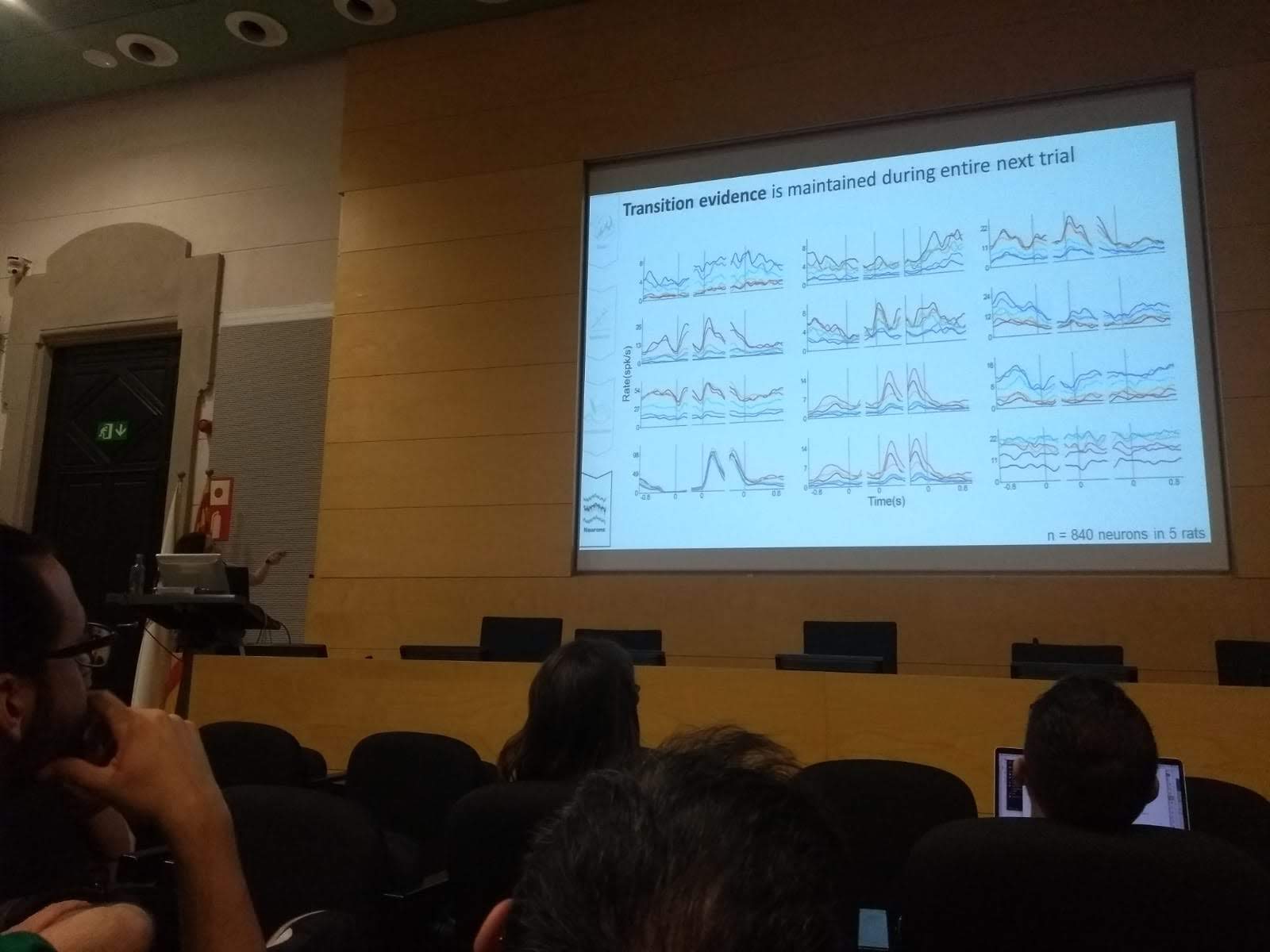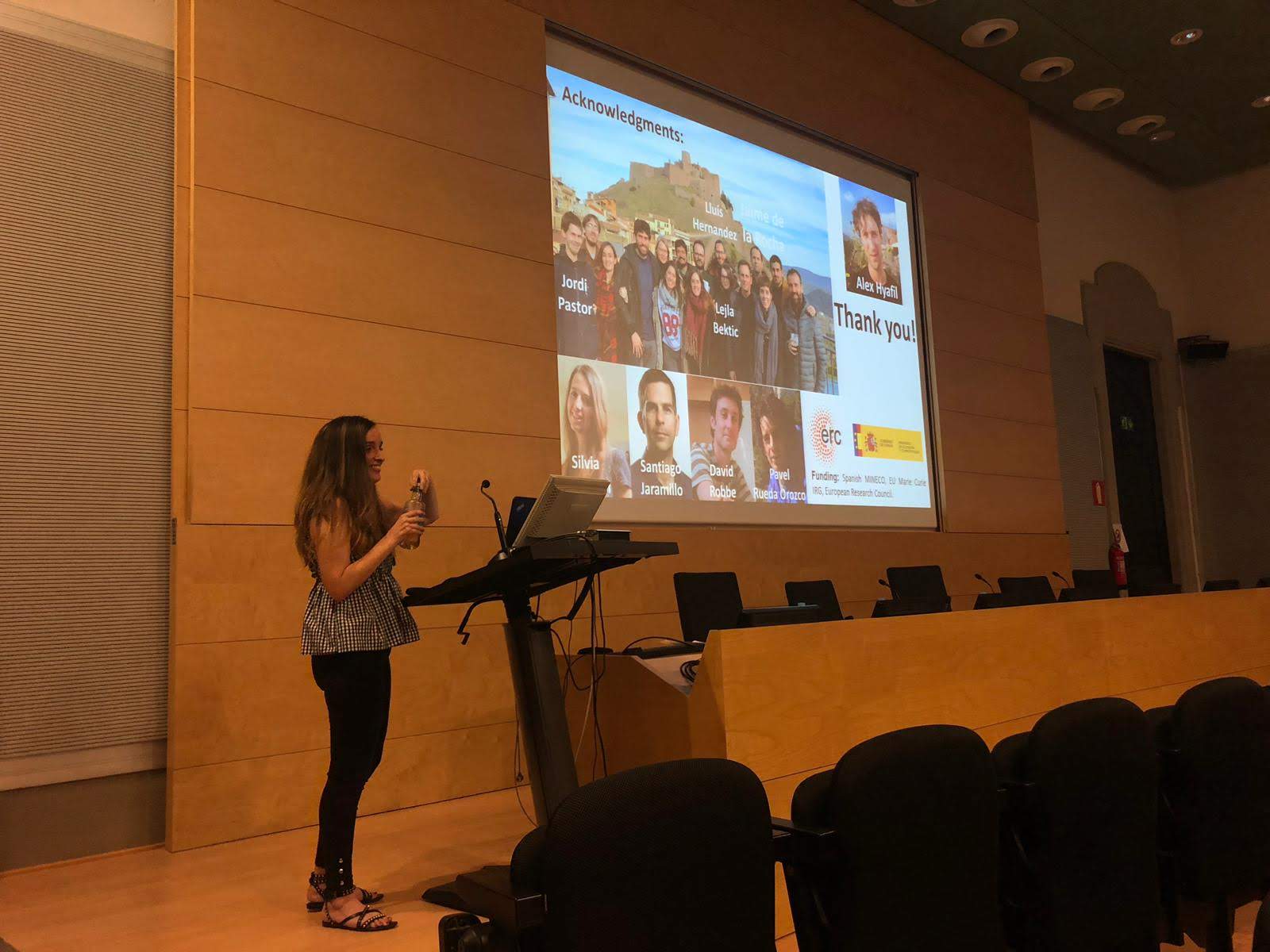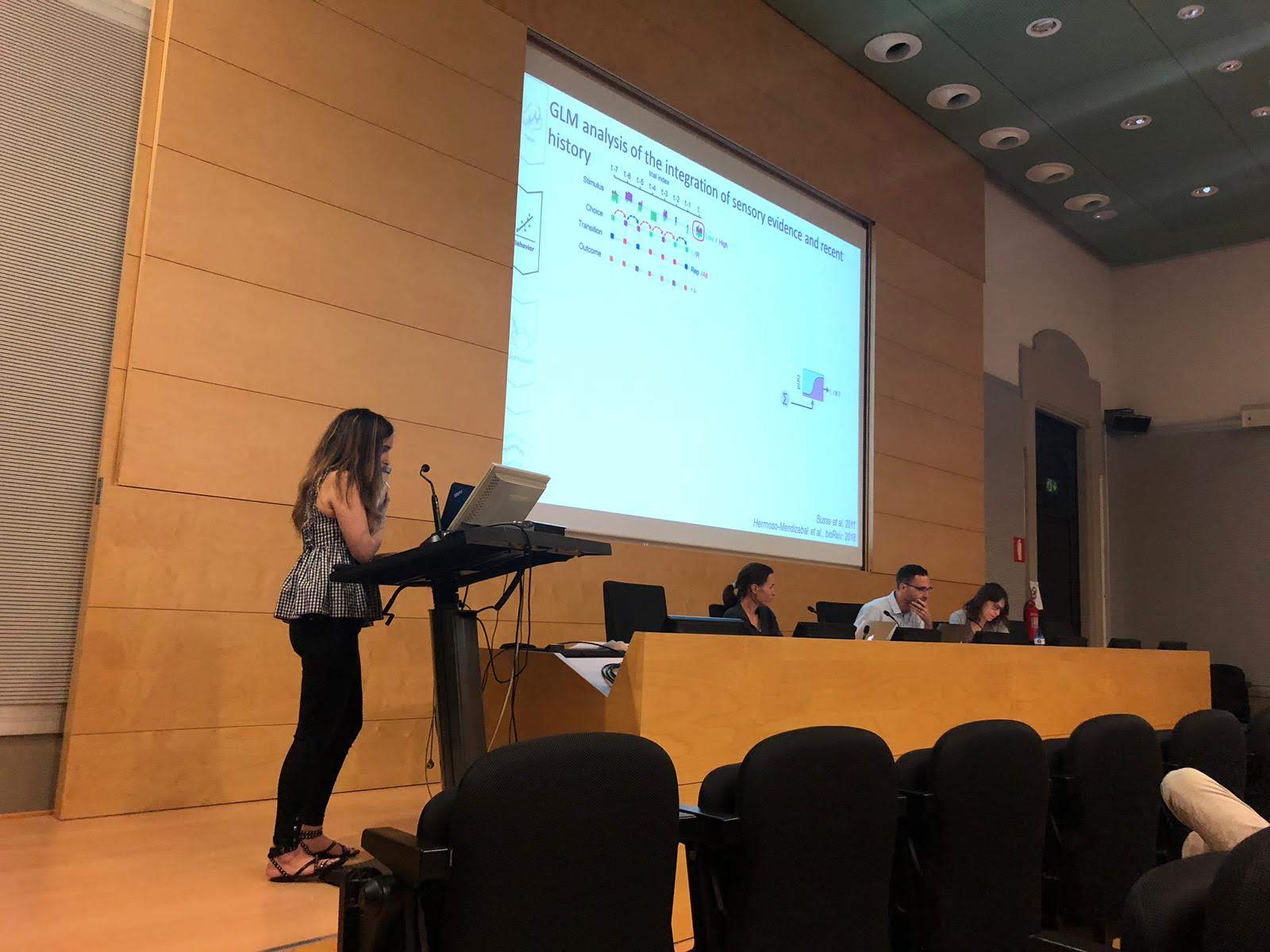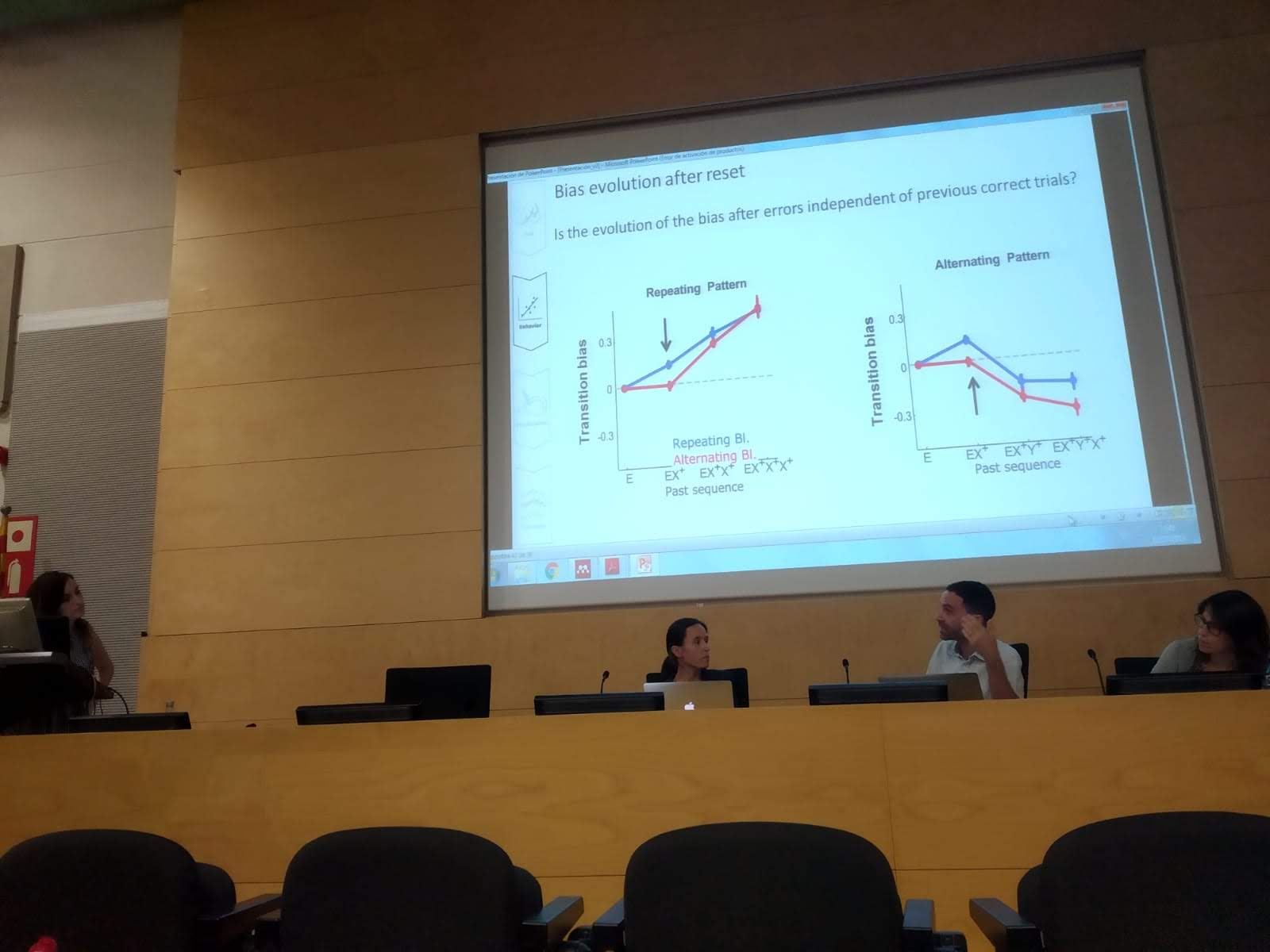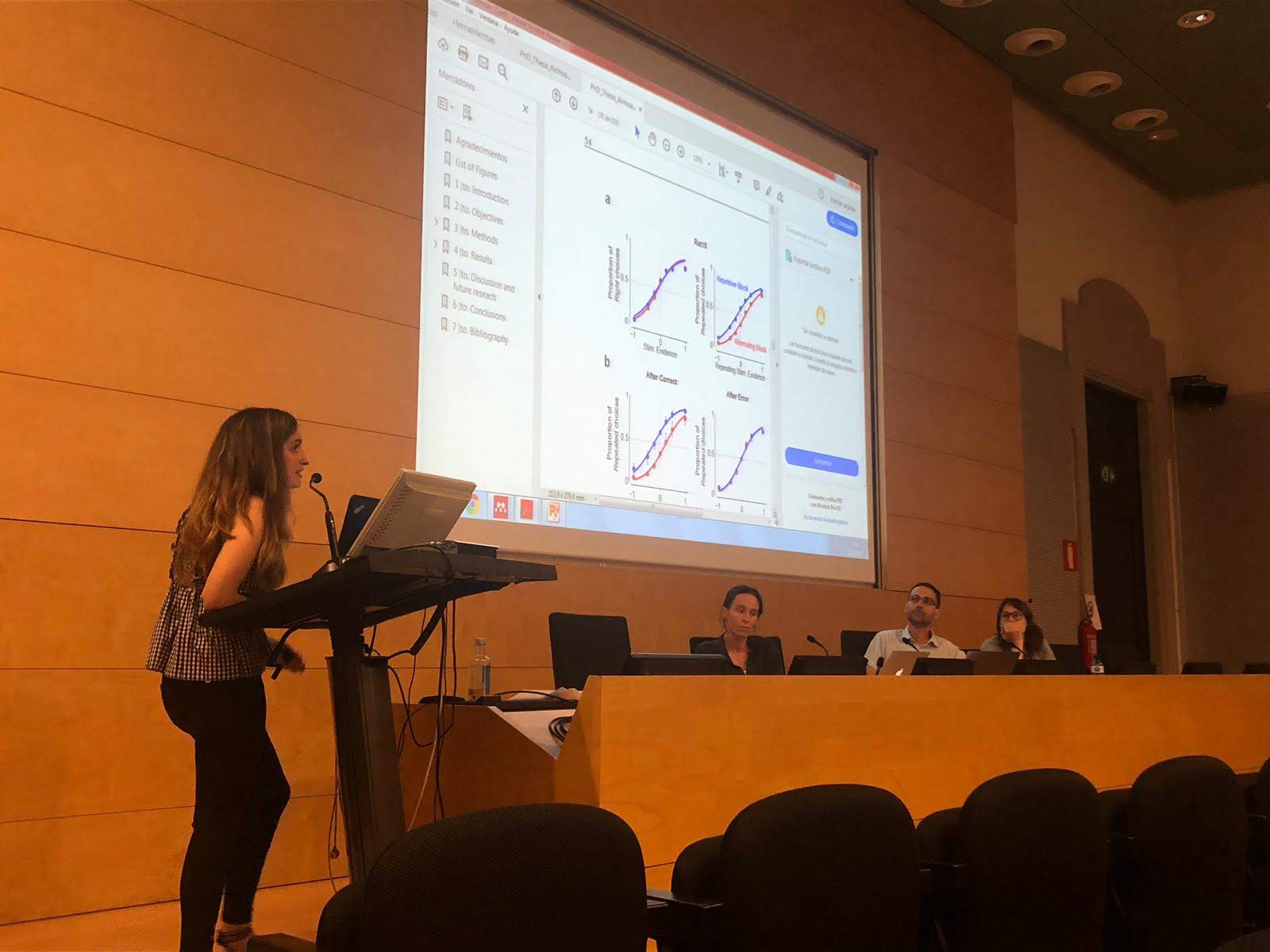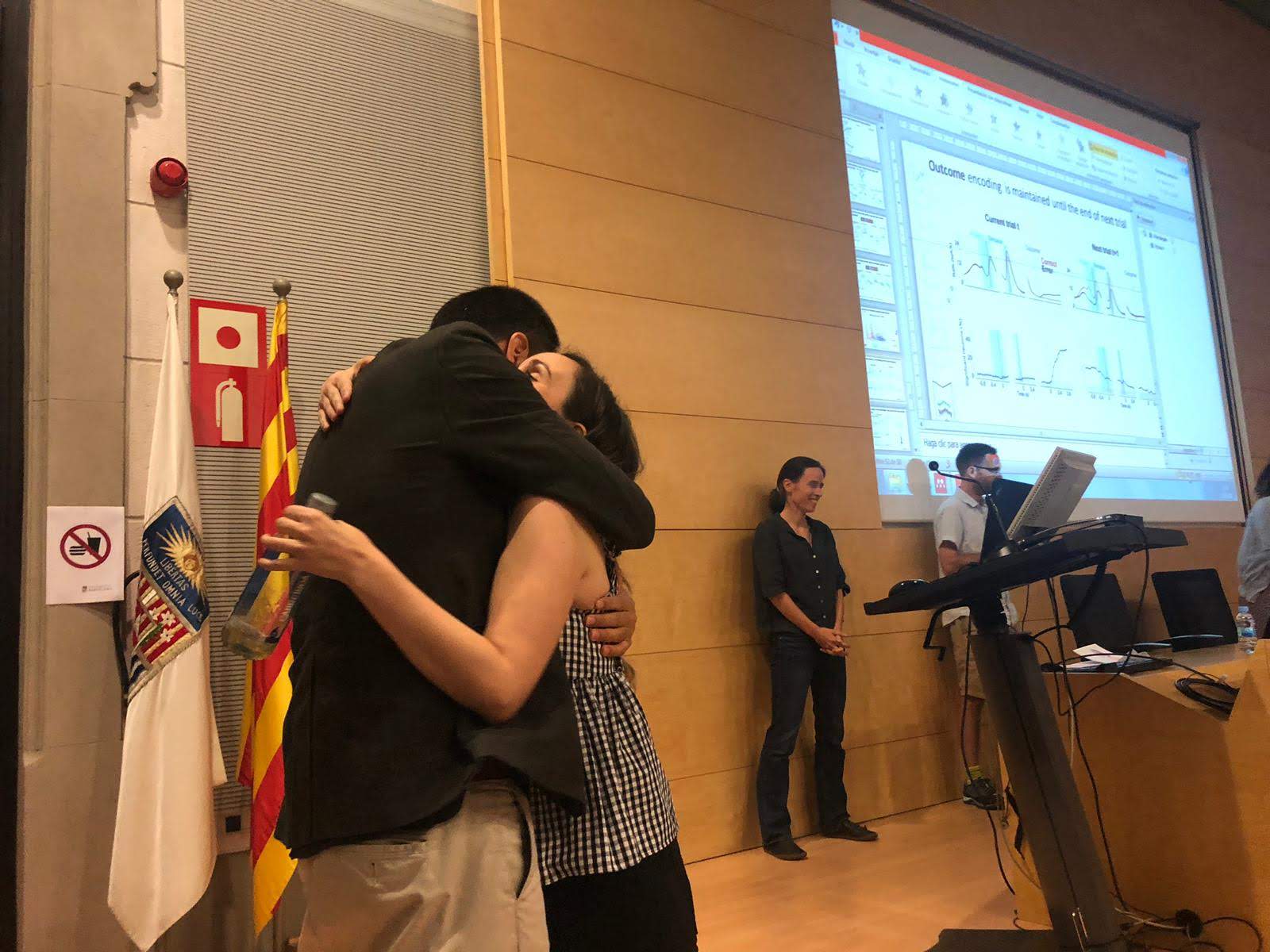Congratulations Dr Hermoso-Mendizabal
Dr. Ainhoa Hermoso-Medizabal defended her long-waited thesis. The entire lab filled with joy and happiness! Yeah!. After several years of hard work, first setting up a new behavioral task, building the setups, then analysing and modeling the behavioral data, performing the electrophysiology experiments and analysing the data, she was able to summarize all the many results she found into a some hundred and something pages of science. She did a great presentation and was able to discuss the implications and limitations of her work with her thesis committee (composed of Laura Busse, Alfonso Renart and Gemma Huguet). Congratulations Dr Hermoso-Mendizabal.
Jaime: Do you remember why you decided to come to work in this group? I mean, was there anything in particular, besides the natural charm of the PI, that attracted your attention?
Ainhoa: When I started thinking of doing a PhD I debated to do a PhD in nuclear physics, related to what I actually studied during my physics degree, or do something more related to biology or biomedicine. At that time I didn’t know almost anything about neuroscience but when I came for the interview I spoke with a lot of different people who presented their projects and I found it a really interesting field to work in. Definitely, I loved the atmosphere and energy of the group and I realized that it was the perfect place to become a scientist.
Jaime: When you chose to do electrophysiology in behaving rats, I guess your perspective of the challenges you would face with the behavior, ephys or analysis was very different from now. What would you say to someone who is starting their PhD and wants to do a similar approach combining a complex behavior, electrophysiology, pharmacology and analysis/modeling?
Ainhoa: Choosing the multidisciplinary approach was the best decision I made during my PhD. It is true that it’s sometimes exhausting, because you always need to be focuses on several things at the same time (the experiments and analysis need to be done almost in parallel for it to be an effective multidisciplinary approach), but it will give you multiple-view-perspective to understand any problem and also it will give you the ability to test any idea that you have. This freedom is priceless.
Jaime: I guess there were many difficult points during these years in terms of frustration about things not working. What was the most difficult point and why?
Ainhoa: I think that the most difficult thing is to maintain the motivation when the things are not going well or they go too slow for a long time. Sometimes, it’s quite hard to wake up and find energy to test a new possible solution to a certain problem when previously tested 1000 possible solutions were not working. In other words, insist, persist and never give up is the most difficult thing but at same time the most rewarding one.
Jaime: And what was the finding or the achievement that gave you the biggest excitment? Can you share some details of the excitement of the moment?
Ainhoa: There were two moments. The first time that I recorded alone my first spikes after months of building the set-up, training the animals… I felt very proud of having completed all the necessary steps. And the second one was when I found that the recorded neurons were encoding the history choice bias that I wanted to find. At that time, I remember that I went to your office and I said that my PhD was done and that on the next day I could finish it. That very preliminary PSTHs were the greatest reward of many years of effort.
Jaime: If you could magically call to the future and ask the neuroscientists one question, what would you ask them?
Ainhoa: Which are the neural mechanisms behind human creativity?
Jaime: How would you summarize the results you found in your thesis in one line to non-scientists, to my sister for instance?
Ainhoa: Your brain is constantly building and adjusting expectations about what is going to happen next in order to choose the most profitable decision. These expectations are built based on all the choices performed before, mainly with the previous correct ones. When they fail to predict next option, the brain can modulate the impact of already generated expectations in the next decisions. The brain area involved in expectation building and modulation is striatum.
Jaime: You have seen better than anyone the transformation of the lab, from the earlier days to a more consolidated group. Is there something you miss about those years and/or something you particularly value about the current dynamics with more people and more resources?
Ainhoa: Before, we used to have lunch all together where we usually spoke about more things that just your project with the PI, it was nice and contributed to reduce the gap between PI and students. Nowadays, as the PIs are more busy and we are a lot of people it is more difficult to do it. What I value about the current dynamics is that as there are more experts in different fields, the brainstorming is much richer, different views proposing different types of ideas, it is great.
Jaime: Which of the soft-skills you have learned over all these years you think will be more useful in your professional career?
Ainhoa: Self-management, decision-making, persistence or self-motivation, critical thinking, active listening, versatility, attention to detail, public speaking…
Jaime: What are you planning to do next? What would be your dream job for the coming years?
Ainhoa: I think that I will move from academia to industry. I love research in neuroscience but I don’t like the job instability of academia. My dream job would be to work as neural data scientist in a health tech company.
Jaime: Thanks for all you have done for this lab. As I said in after your thesis defence, your footprint in this group will last years. Good luck.
Ainhoa: Thanks for the mentoring during all these years!
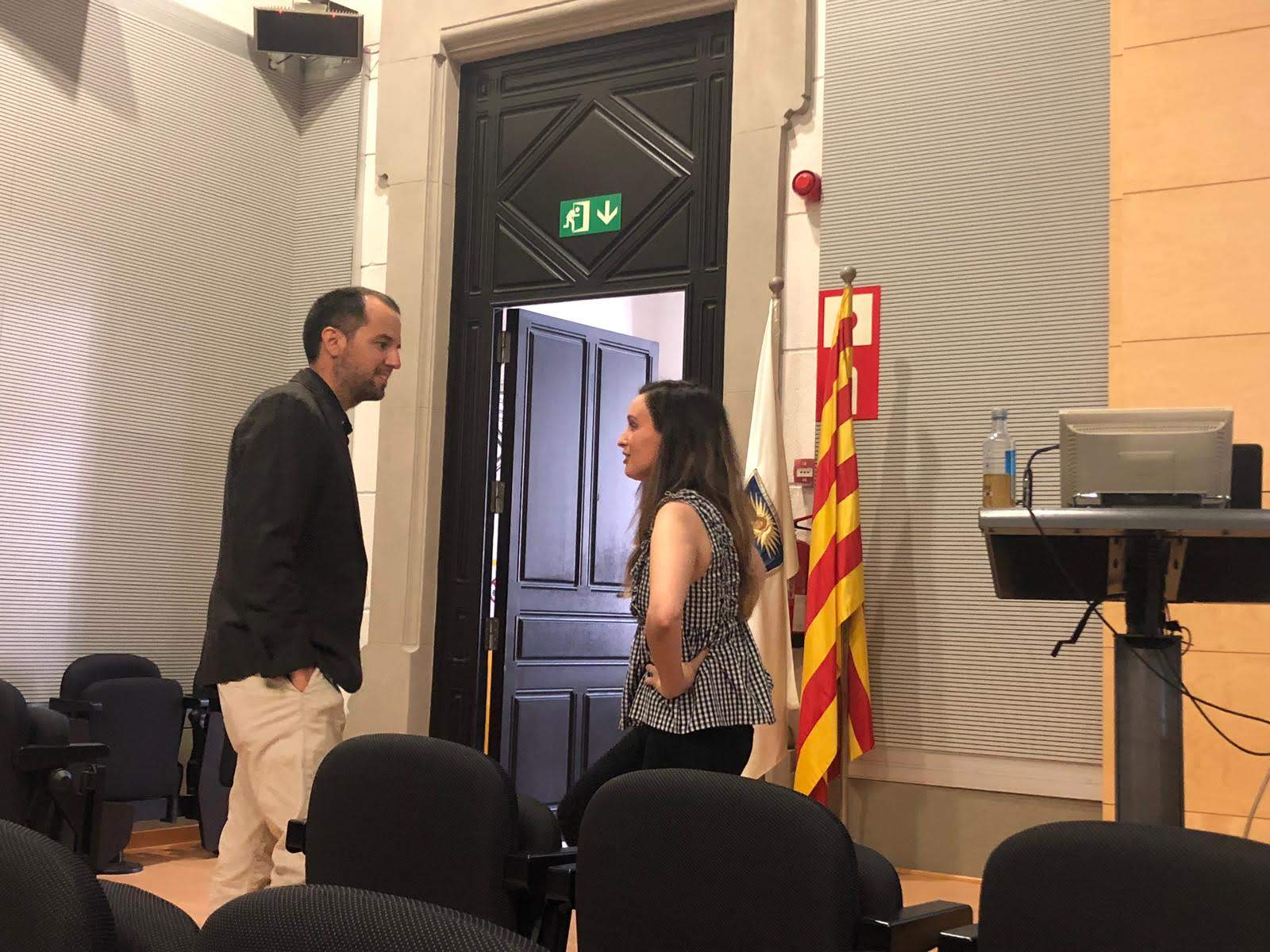
![“There is reset, that’s clear… but how about the rebound ?!” [silence in the room]](https://images.squarespace-cdn.com/content/v1/5bd767fcd7819e145c53c520/1567761142345-FKGS3XUBH81EIEK4922Z/IMG-20190712-WA0006.jpg)
